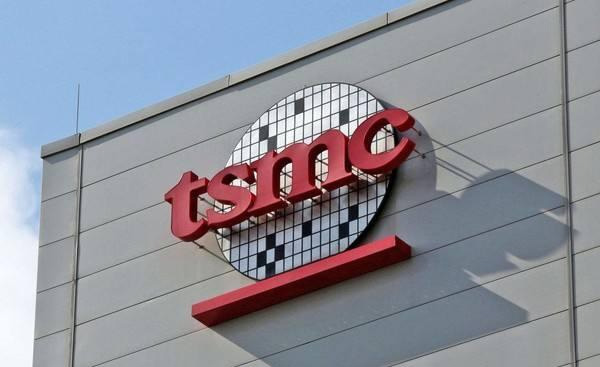-
Integrated Circuits (ICs)
-
Integrated Circuits (ICs)
- Audio Special Purpose
- Clock/Timing - Application Specific
- Clock/Timing - Clock Buffers, Drivers
- Clock/Timing - Clock Generators, PLLs, Frequency Synthesizers
- Clock/Timing - Delay Lines
- Clock/Timing - IC Batteries
- Clock/Timing - Programmable Timers and Oscillators
- Clock/Timing - Real Time Clocks
- Data Acquisition - ADCs/DACs - Special Purpose
- Data Acquisition - Analog Front End (AFE)
- Data Acquisition - Analog to Digital Converters (ADC)
- Data Acquisition - Digital Potentiometers
- Data Acquisition - Digital to Analog Converters (DAC)
-
Integrated Circuits (ICs)
-
Connectors, Interconnects
-
Connectors, Interconnects
- Backplane Connectors - ARINC Inserts
- Backplane Connectors - ARINC
- Backplane Connectors - Accessories
- Backplane Connectors - Contacts
- Backplane Connectors - DIN 41612
- Backplane Connectors - Hard Metric, Standard
- Backplane Connectors - Housings
- Backplane Connectors - Specialized
- Banana and Tip Connectors - Accessories
- Banana and Tip Connectors - Adapters
- Banana and Tip Connectors - Binding Posts
- Banana and Tip Connectors - Jacks, Plugs
- Barrel - Accessories
-
Connectors, Interconnects
- Resistors
-
Capacitors
-
Capacitors
- Accessories
- Aluminum - Polymer Capacitors
- Aluminum Electrolytic Capacitors
- Capacitor Networks, Arrays
- Ceramic Capacitors
- Electric Double Layer Capacitors (EDLC), Supercapacitors
- Film Capacitors
- Mica and PTFE Capacitors
- Niobium Oxide Capacitors
- Silicon Capacitors
- Tantalum - Polymer Capacitors
- Tantalum Capacitors
- Thin Film Capacitors
-
Capacitors
- Crystals, Oscillators, Resonators
-
Cable Assemblies
-
Cable Assemblies
- Barrel - Audio Cables
- Barrel - Power Cables
- Between Series Adapter Cables
- Circular Cable Assemblies
- Coaxial Cables (RF)
- D-Shaped, Centronics Cables
- D-Sub Cables
- Fiber Optic Cables
- Firewire Cables (IEEE 1394)
- Flat Flex Jumpers, Cables (FFC, FPC)
- Flat Flex Ribbon Jumpers, Cables
- Jumper Wires, Pre-Crimped Leads
- LGH Cables
-
Cable Assemblies
- Power Supplies - Board Mount
-
Switches
-
Switches
- Accessories - Boots, Seals
- Accessories - Caps
- Accessories
- Cable Pull Switches
- Configurable Switch Components - Body
- Configurable Switch Components - Contact Block
- Configurable Switch Components - Illumination Source
- Configurable Switch Components - Lens
- DIP Switches
- Disconnect Switch Components
- Keylock Switches
- Keypad Switches
- Magnetic, Reed Switches
-
Switches
- Circuit Protection
-
Discrete Semiconductor Products
-
Discrete Semiconductor Products
- Diodes - Bridge Rectifiers
- Diodes - RF
- Diodes - Rectifiers - Arrays
- Diodes - Rectifiers - Single
- Diodes - Variable Capacitance (Varicaps, Varactors)
- Diodes - Zener - Arrays
- Diodes - Zener - Single
- Power Driver Modules
- Thyristors - DIACs, SIDACs
- Thyristors - SCRs - Modules
- Thyristors - SCRs
- Thyristors - TRIACs
- Transistors - Bipolar (BJT) - Arrays
-
Discrete Semiconductor Products
-
Optoelectronics
-
Optoelectronics
- Accessories
- Ballasts, Inverters
- Display Bezels, Lenses
- Display Modules - LCD, OLED Character and Numeric
- Display Modules - LCD, OLED, Graphic
- Display Modules - LED Character and Numeric
- Display Modules - LED Dot Matrix and Cluster
- Display Modules - Vacuum Fluorescent (VFD)
- Display, Monitor - LCD Driver/Controller
- Electroluminescent
- Fiber Optics - Attenuators
- Fiber Optics - Receivers
- Fiber Optics - Switches, Multiplexers, Demultiplexers
-
Optoelectronics
Expose TSMC to acquire ASML's high-NA EUV chip maker in 2024
Nanotechnology in the semiconductor industry is currently very competitive. Although the industry is in an absolute monopoly, the competition among several target companies is also very cruel. Among them, the big brother TSMC currently occupies an absolute advantage in the industry. Still, TSMC's 3-nanometer technology has been at the center of several controversies this year, as rival Samsung Corp preemptively announced mass production in the first half of the year, and market reports said TSMC would cut capital due to Intel Corp's order issues expenditure.
According to a supply chain update, TSMC is targeting mass production of its 2-nanometer (nm) semiconductor manufacturing process in 2025. TSMC is currently gearing up to ramp up production of its 3nm node, considered one of the most advanced chip manufacturing technologies in the world, and they say they will continue to lead the global semiconductor industry with next-generation technologies.
TSMC will also acquire ASML's high-NA EUV chip maker in 2024. The details were shared by Dr. Y.J. Mii, TSMC's senior vice president of R&D and technology, and reported by United News (UDN). A key constraint in the chipmaking industry, and often a key factor in determining whether a company can gain a head start over its competitors.
Manufacturing technologies covering advanced 7nm and smaller products require the use of extreme ultraviolet lithography (EUV) to print billions of tiny circuits on a small scale, currently used only by TSMC, Samsung and Intel in the world. However, further advances in chip-making technology, involving further shrinking of circuit sizes, will make it difficult for chipmakers to continue using these machines.
In the next phase of chip manufacturing, manufacturers will move to machines with larger lenses. These are called high NA (numerical aperture), and TSMC will receive them in 2024. From this, the machines will be used to make chips on a 2-nanometer manufacturing process, as the executive also stressed that the technology will enter mass production in 2025.

